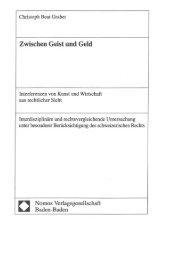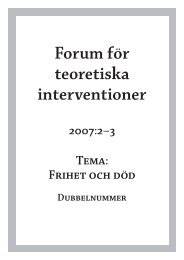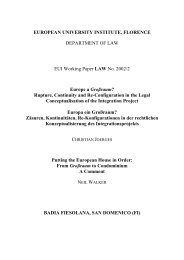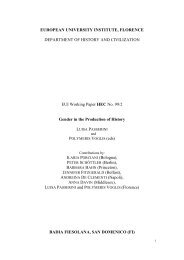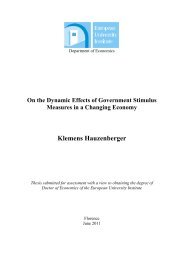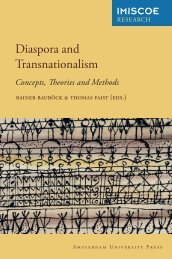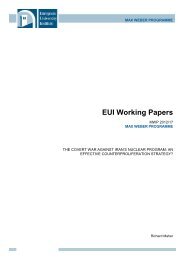Sinziana-Elena Poiana Ioana Lupea Irina-Madalina Doroftei Alina ...
Sinziana-Elena Poiana Ioana Lupea Irina-Madalina Doroftei Alina ...
Sinziana-Elena Poiana Ioana Lupea Irina-Madalina Doroftei Alina ...
You also want an ePaper? Increase the reach of your titles
YUMPU automatically turns print PDFs into web optimized ePapers that Google loves.
When considering religious or ethnic tolerance issues, one must observe that the pre-1990 equality<br />
philosophy assumed that there are no groups that should be treated differently, either negatively or<br />
positively, and religious expressions were prohibited altogether in any form. But, in the context of<br />
administrative reform and decentralization in education, accompanied by the increased pressure from<br />
ethnical and religious minorities to gain access to rights, a number of issues related to tolerance<br />
towards ethnic and religious diversity in schools became more visible in the past 20 years of transition<br />
to democracy. This was the result of the work done by assertive advocacy groups, of the unexpected<br />
media support or stronger political representation. For these issues policy solutions were found and are<br />
successfully being implemented, while others are only recently reaching the agenda, despite being<br />
deeply rooted into long-standing social problems.<br />
Ethnic toleration. The policy discourse and the public discourse are significantly divided on the issue<br />
of segregation of Roma children in school. The debate has been ongoing, fluctuating up and down on<br />
the public agenda, however it had never reached so high up on the agenda as it did when a Romanian<br />
Court of Appeal decided on penalizing a primary school teacher with a 10,000 Euro fine for not<br />
allowing a Roma child to attend her class. While the policy discourse was building around ensuring<br />
the right to education of the child, the public discourse was slightly skewed towards the teacher’s<br />
position. It proved to be a case that inspired many in Romania, making people more sensitive to the<br />
Roma pupils’ needs and to the problems these pupils are confronted with. On the other hand, the<br />
condemnation of the teacher who had refused a Roma pupil in the class was seen as an exemplary<br />
punishment meant to discourage discrimination in schools.<br />
Roma activist groups are still reporting cases of Roma children who are still denied enrollment in<br />
mainstream schools. These have not reached the agenda and have not been addressed before in any<br />
way in the national policy discourse. The first case analyzed in Chapter 2 has had the effect of a break<br />
in the wall, and showed that what is registered as discrimination can and will be sanctioned as such,<br />
creating the effect of uninviting the perpetrators of long established practices, and challenging them,<br />
rather than perpetrating the status quo, into re-examining their well-established ways. It shows that a<br />
court decision might have the effect of stimulating and even forcing the birth of public policy and<br />
national standards where unfortunate practices are being comfortably perpetuated. Whether this<br />
challenge will be taken further, to building a solid policy discourse, remains to be seen.<br />
Religious toleration. The interwar discourse on Orthodoxy as a fundamental element of the Romanian<br />
self resurfaced in the public discourse in the mid ‘90s, mostly in connection to the fight against the<br />
communist atheism. Despite the presumed separation between state and church, excepting the select<br />
few, the main discourse has been in favor of the state’s actions to support the Romanian Orthodox<br />
Church, in the virtue of the absolute Orthodox majority of the Romanian population and the public<br />
function that the Church is thought to fulfill. Even though the debate on teaching religion in schools<br />
had been ongoing since it became a mandatory subject in January 1990, talking about displays of<br />
Christian representations in school seemed a rather progressive debate topic. However, the second<br />
case study in Chapter 2 documented that in 2006 Mr. Emil Moise, a philosophy professor, filed a<br />
complaint with the National Council for Combating Discrimination (CNCD) claiming that paintings of<br />
Christian figures that hanged on the school’s walls were a breach of the non-orthodox students’ right<br />
to free choice of confession and impeded the free development of the spirit of the rest of the students.<br />
After the case reached the public agenda, Mr. Moise was literally harassed by media, politicians and<br />
the Orthodox Church. His civil lawsuit against the Romanian Government had reached the High Court<br />
of Cassation and Justice two years ago. But it became clear that there is a newly established tradition<br />
pushed to the public agenda by representatives of the Orthodox church to great success, and that the<br />
state policy supports the promotion of Orthodox values in schools to the detriment of other<br />
confessions.<br />
Political Representation, Ethnicity and Tolerance. In Chapter 3 the research tackled the issue of the<br />
acceptance or the lack of tolerance towards Hungarian miniority in Romanian Public<br />
3



